
The image of St. Francis in Santa Croce
Pope Gregory IX proclaimed Francis of Assisi a saint in July 1228, less than two years after his death. Thomas of Celano wrote his Vita Prima in 1228-9 but the Legenda Maior drafted by Bonaventure of Bagnoregio, the order's Minister General, was approved in 1263 and all earlier biographies were destroyed and banned in 1266. This was a clear attempt to water down the more controversial aspects of the founder's thought, reflecting the growing power within the order of the Conventuals who wished to present the image of saint who was not a social outcast. While the stories from Francis's life and even his image in the Bardi Altarpiece were inspired by Thomas of Celano's narrative, many of the subsequent depictions of the saint made for Santa Croce were inspired by Bonaventure's Legenda Maior.
Clean-shaven or bearded: a comparison of interpretations
Thomas, who had known Francis, described him as having a sparse "black beard" (Vita Prima, XXXIX, 83), and that is how Coppo di Marcovaldo portrayed him c. 1245-50, but so did Taddeo Gaddi in the sacristy (in the small panels for the reliquary cupboard painted c. 1335-8 and now split between the Alte Pinakothek in Munich and the Galleria dell’Accademia in Florence, and in his Crucifixion dated c. 1340) and in the refectory (c. 1350), and so did Agnolo Gaddi in one of the most blatantly visible places in the entire church, namely the vault over the high altar (1380-90?).
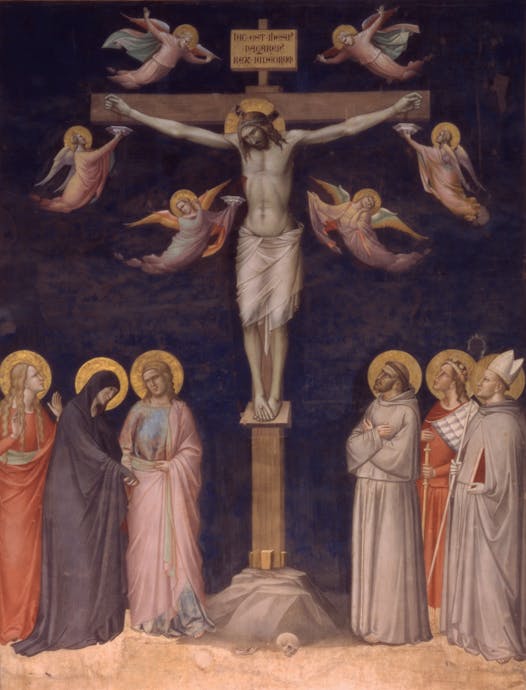
Taddeo Gaddi, Crucifixion, c. 1340. Basilica of Santa Croce, sacristy
Francis is still bearded in a bust by Giovanni della Robbia (c. 1490) which once stood over the door into the Medici Chapel, now in the Cerchi/Canigiani Chapel, and he sports a beard in a panel in Giovanni del Biondo's polyptych of 1379 in the Rinuccini Chapel depicting St. Francis Wedding Lady Poverty, a rare subject already pointing in the direction of the order's stricter wing.
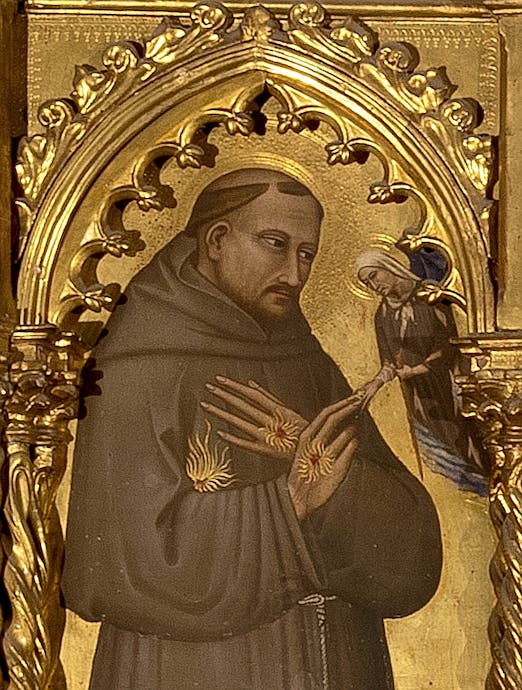
Giovanni del Biondo, St. Francis Wedding Lady Poverty, detail of the Rinuccini Polyptych, 1379. Basilica of Santa Croce, sacristy, Rinuccini Chapel
Giotto's Francis is clean-shaven in the frescoes in the Bardi Chapel (1317-21?), just as he was in the earlier Raleigh Polyptych (North Carolina Museum of Art, 1305-10) which probably once stood on the altar of the Peruzzi Chapel.
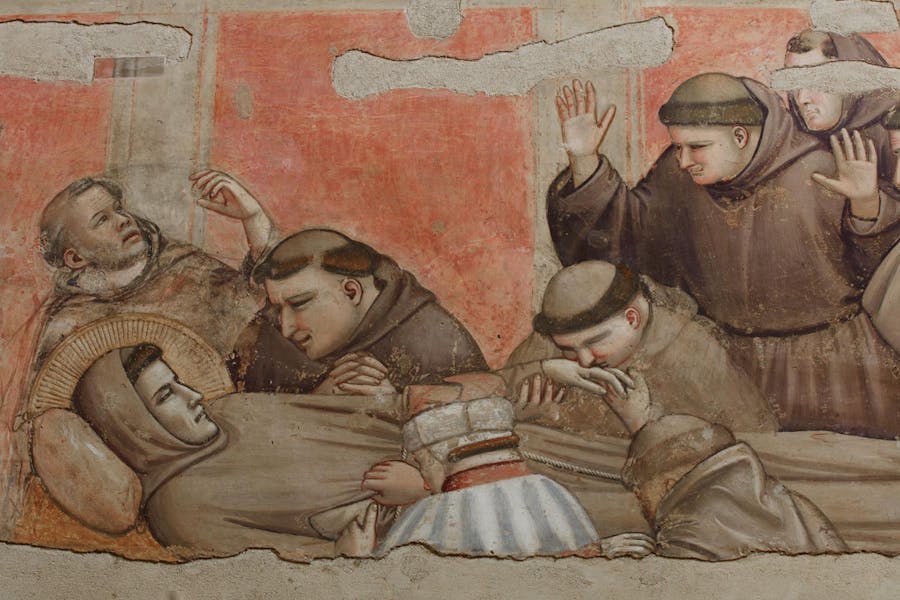
Francis is portrayed clean-shaven by Domenico Veneziano in a detached fresco formerly in the Cavalcanti Chapel (c. 1450), by Andrea della Robbia in a glazed terracotta reredos made for the Compagnia di San Bartolomeo known as "La Capanna" c. 1475 (now in the Cerchi/Canigiani Chapel) and by Benedetto da Maiano in a panel on his Pulpit (1481-7), because there was a growing trend within the order to attenuate the more revolutionary implications of the founder's thought and at the time men had to be clean-shaven if they wished to avoid being seen as social outcasts. These patrons – wealthy merchant bankers such as the Bardi, the Peruzzi, the Cavalcanti or the Mellini, and well-to-do members of the Capanna – undoubtedly influenced the choice of the iconographical type to be adopted, and thus the two opposing images of the saint – reflecting the two tendencies within the order – coexist side by side in Santa Croce.
Stigmata
The stigmata are a feature unique to St. Francis, who was the first person to receive them since Christ. The event – the best-known and most frequently depicted episode in the saint's life – took place at La Verna in September 1224. It was depicted in Santa Croce by Coppo di Marcovaldo in the Bardi Altarpiece, by Giotto in the panel above the Bardi Altarpiece and by Taddeo Gaddi both in the stained-glass window in the Baroncelli Chapel (c. 1328-30) and on the back wall of the refectory.
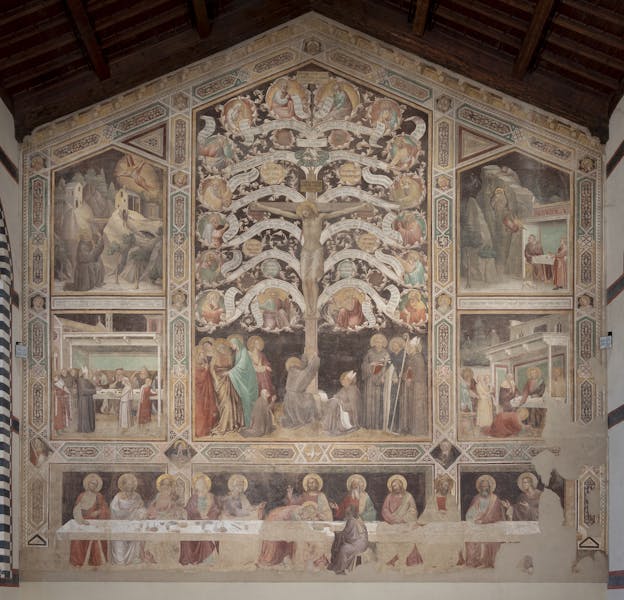
It was also depicted by Pagno di Lapo Portigiani on a marble basin in the sacristy (1440-55), by Benedetto da Maiano on his Pulpit and by Andrea della Robbia on a reredos for the Compagnia della Capanna. The scenes vary in the presence or otherwise of the saint's companion, in the setting which can be more or less wild and in the number of buildings in it, while only Pagno di Lapo fails to set the figure of Francis in context. In any event, they all refer to Bonaventure who describes the episode and the vision of the Seraphim in Christ's likeness in some detail (Legenda maior, XIII, 1122-1127).
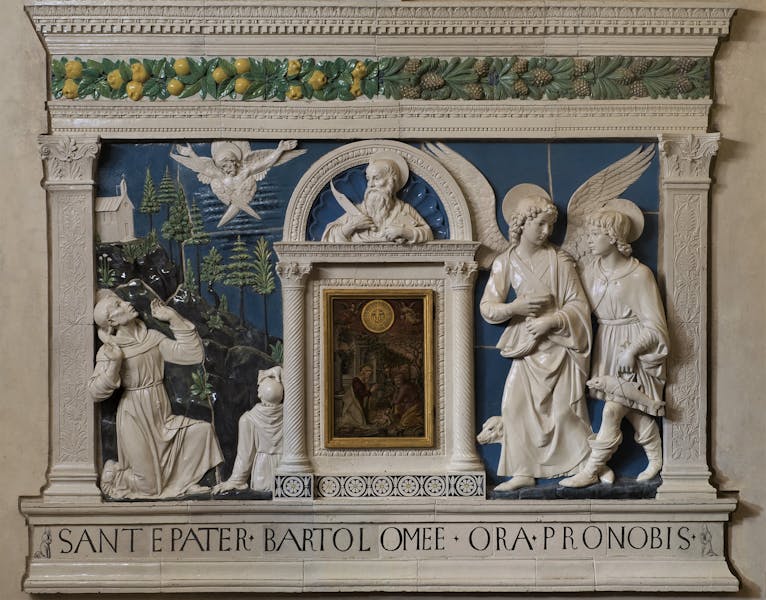
Andrea della Robbia, Reredos for the Compagnia di San Bartolomeo known as La Capanna, c. 1475. Museo dell’Opera di Santa Croce, Cerchi Chapel
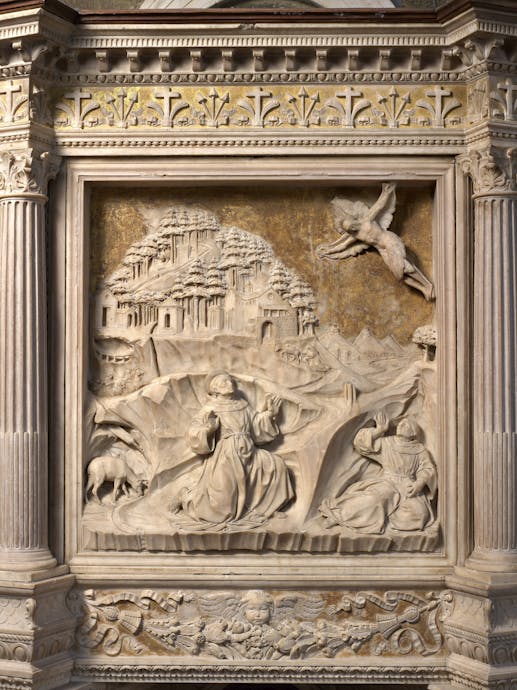
Francis and the Sultan of Egypt
Equally significant is the depiction of the Trial by Fire before the Sultan of Egypt, an episode alleged to have taken place during Francis's journey to the Middle East in 1219-20. The episode is questioned by scholars, but Bonaventure relates it in his Legenda maior (IX, 1174-1175) where Al-Malik al-Kamil's priests are challenged to walk through the fire to demonstrate the truth of their arguments (by ordeal). Giotto illustrated the scene in the Bardi Chapel and Benedetto da Maiano did so on his Pulpit. Giotto underscores the contrast between the two positions: the priests' haste to depart through fear of having to face the ordeal, and the sultan's anger at their cowardice. In the Bardi Altarpiece Coppo di Marcovaldo provides a different version inspired by Thomas of Celano (XXXIX, 57) showing how the Sultan, having failed to win Francis over with precious gifts, listens to him and is "moved by his words" – a very different attitude from Giotto's version, with Francis's will to persuade through words and by example rather than through a trial of strength.
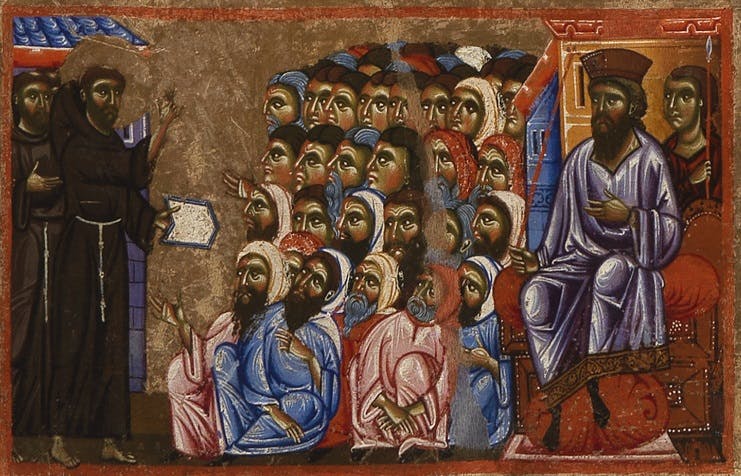
Insights
Discover the history of the Franciscans in Santa Croce
Discover the history of Santa Croce